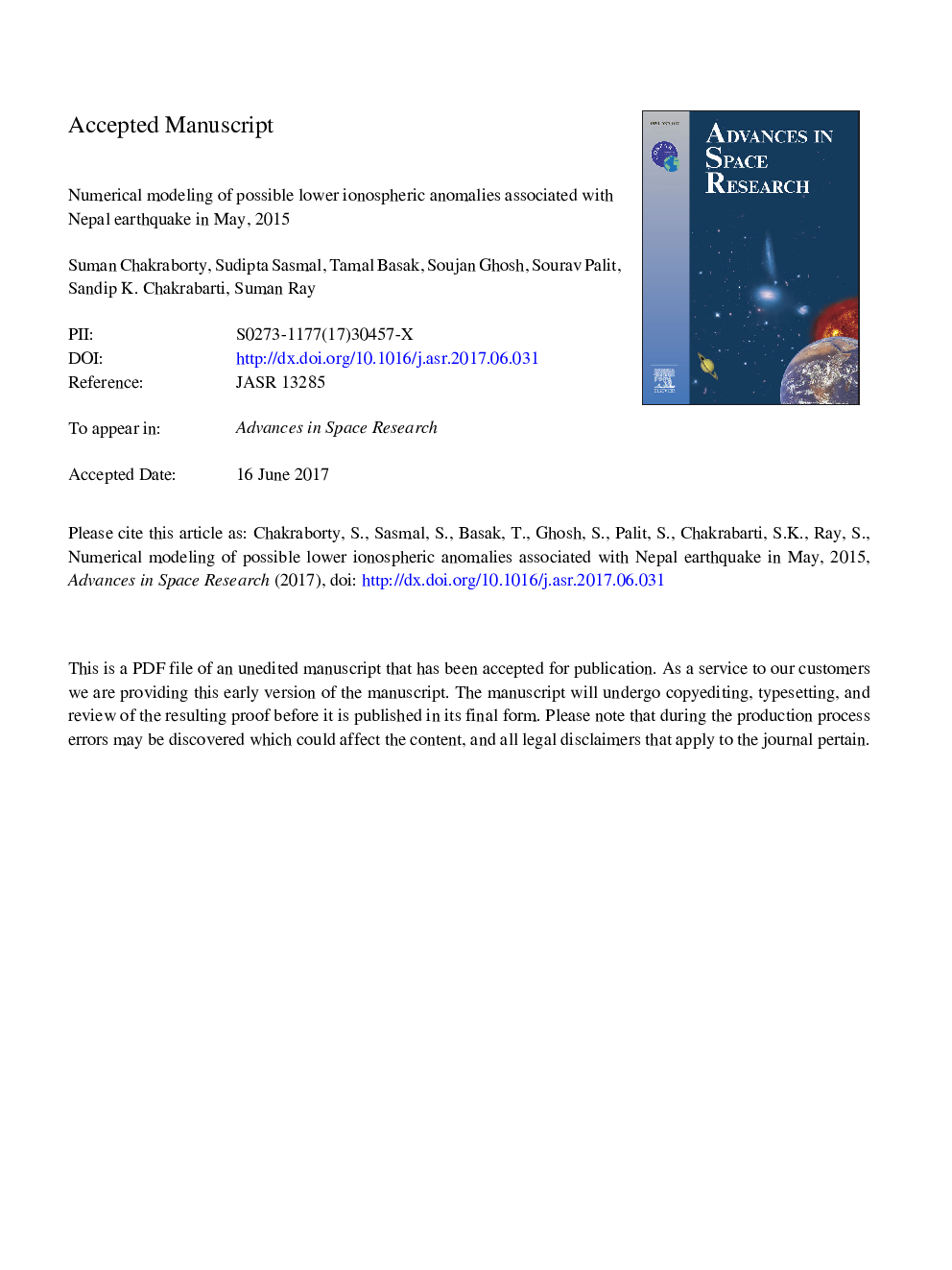| Article ID | Journal | Published Year | Pages | File Type |
|---|---|---|---|---|
| 5486402 | Advances in Space Research | 2017 | 25 Pages |
Abstract
We present perturbations due to seismo-ionospheric coupling processes in propagation characteristics of sub-ionospheric Very Low Frequency (VLF) signals received at Ionospheric & Earthquake Research Centre (IERC) (Lat. 22.50°N, Long. 87.48°E), India. The study is done during and prior to an earthquake of Richter scale magnitude M = 7.3 occurring at a depth of 18 km at southeast of Kodari, Nepal on 12 May 2015 at 12:35:19 IST (07:05:19 UT). The recorded VLF signal of Japanese transmitter JJI at frequency 22.2 kHz (Lat. 32.08°N, Long. 130.83°E) suffers from strong shifts in sunrise and sunset terminator times towards nighttime starting from three to four days prior to the earthquake. The signal shows a similar variation in terminator times during a major aftershock of magnitude M = 6.7 on 16 May, 2015 at 17:04:10 IST (11:34:10 UT). These shifts in terminator times is numerically modeled using Long Wavelength Propagation Capability (LWPC) Programme. The unperturbed VLF signal is simulated by using the day and night variation of reflection height (hâ²) and steepness parameter (β) fed in LWPC for the entire path. The perturbed signal is obtained by additional variation of these parameters inside the earthquake preparation zone. It is found that the shift of the terminator time towards nighttime happens only when the reflection height is increased. We also calculate electron density profile by using the Wait's exponential formula for specified location over the propagation path.
Keywords
Related Topics
Physical Sciences and Engineering
Earth and Planetary Sciences
Space and Planetary Science
Authors
Suman Chakraborty, Sudipta Sasmal, Tamal Basak, Soujan Ghosh, Sourav Palit, Sandip K. Chakrabarti, Suman Ray,
